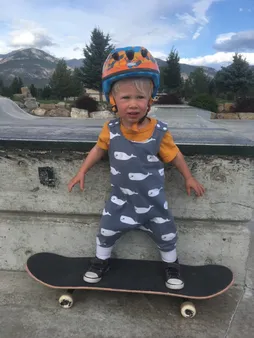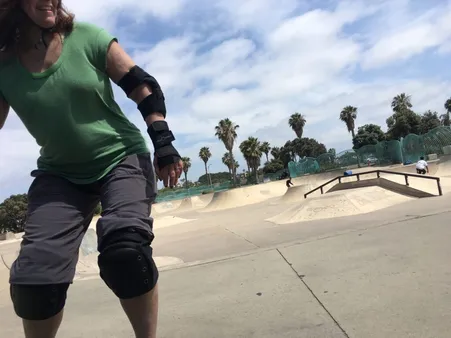Table of Contents
Welcome to the world of skateboarding with Kizworld, your ultimate guide to The best skateboarding equipment and accessories. Whether you're a seasoned pro or just starting out, having the right gear is essential for a safe and enjoyable ride. Discover our comprehensive guide to skateboards, protective gear, and maintenance tips to keep your board in top shape. Learn from the s with video reviews and tutorials, and avoid common beginner mistakes with our pro tips. Unleash your passion for skateboarding with kizworld as your trusted companion.
The Best Skateboarding Equipment and Accessories for an Extreme Ride
I. Skateboard Decks: The Foundation of Your Ride
When it comes to skateboarding, the deck is the heart of your setup. It's the platform that you stand on, the foundation for all your tricks and maneuvers. Choosing the right deck is essential for a comfortable and enjoyable ride. In this section, we'll dive into the world of skateboard decks, helping you find the perfect one for your needs.
Skateboard decks come in a variety of shapes, sizes, and materials. The most common shape is the popsicle deck, which is characterized by its pointed nose and tail. This shape is ideal for street skating and park riding. Other popular shapes include the cruiser deck, which is longer and wider for a more relaxed ride, and the longboard deck, which is even longer and wider for cruising and carving.
Type | Shape | Ideal for |
Popsicle Deck | Pointed nose and tail | Street skating, park riding |
Cruiser Deck | Longer and wider | Relaxed riding, commuting |
Longboard Deck | Even longer and wider | Cruising, carving |
The size of your deck will depend on your height and weight. A good rule of thumb is to choose a deck that is about 7 to 8 inches wide and 30 to 32 inches long. However, you may need to adjust this size depending on your personal preferences.
The material of your deck will also affect its performance. The most common materials are maple and bamboo. Maple decks are lightweight and durable, making them a good choice for all types of skating. Bamboo decks are also lightweight and durable, but they are also more flexible, which can make them a good choice for cruising and carving.
Once you've chosen the right deck, you'll need to attach trucks, wheels, and bearings. These components will complete your skateboard and allow you to start riding. Be sure to choose components that are compatible with your deck and your riding style.
With the right skateboard deck, you'll be able to take your skating to the next level. So take your time, do your research, and find the perfect deck for you.
- Check out our guide on how to choose the right skateboard for more information.
- Visit our skateboarding section for more tips and advice.
II. Essential Skateboarding Accessories for a Smooth Ride
Essential Skateboarding Accessories for a Smooth Ride
Whether you're a seasoned pro or just starting out, having the right accessories can make all the difference in your skateboarding experience. Here are some essential items that will help you ride smoother, safer, and with more style.
Knee and Elbow Pads
These pads protect your joints from impact and abrasion, making them a must-have for any skateboarder. Look for pads that are comfortable to wear and provide a good range of motion.
Pros | Cons |
|---|---|
Protect your knees and elbows from injury | Can be bulky and uncomfortable to wear |
Come in various sizes and styles to fit your needs | May not be as breathable as other types of pads |
Wrist Guards
Wrist guards protect your wrists from sprains and fractures, which are common injuries in skateboarding. Choose wrist guards that fit snugly and provide good support.
- Protect your wrists from injury
- Come in various sizes and styles to fit your needs
- Can help you maintain control of your board
- May not be as breathable as other types of pads
Skateboard Helmet
A skateboard helmet is essential for protecting your head from serious injury in the event of a fall. Look for a helmet that fits snugly and is DOT-approved.
- Protects your head from serious injury
- Required by law in many areas
- Comes in various styles and colors to fit your personality
Skateboard Shoes
Skateboard shoes are designed to provide good grip and support for your feet. Look for shoes with a flat sole and a grippy tread pattern.
Pros | Cons |
|---|---|
Provide good grip and support for your feet | Can be more expensive than regular sneakers |
May not be as comfortable to wear for long periods of time |
Skateboard Backpack
A skateboard backpack is a great way to carry your board and other gear around with you. Look for a backpack that is durable and has plenty of storage space.
- Easily carry your skateboard and other gear
- Comes in various sizes and styles to fit your needs
- Can also be used for carrying school books or other items
With these essential accessories, you'll be well on your way to enjoying a safe and stylish skateboarding experience. Be sure to check out our related articles on choosing the right skateboard and the benefits of skateboarding for more information.
III. Protective Gear: Safety First for Skateboarders
When you hit the skate park or the streets with your board, it's essential to prioritize your safety. The right protective gear can help you prevent serious injuries and keep you skating with confidence. Investing in a good helmet is a crucial first step. Look for one that meets safety standards and fits snugly on your head. Knee and elbow pads are also important, as they can cushion impacts and protect your joints. Wrist guards can help prevent sprains and fractures, while a mouthguard can protect your teeth and lips.
Item | Importance |
Helmet | Prevents head injuries |
Knee pads | Protects knees from impact |
Elbow pads | Protects elbows from impact |
Wrist guards | Prevents sprains and fractures |
Mouthguard | Protects teeth and lips |
In addition to these basic pieces of gear, consider investing in additional protective items if you're planning on doing more advanced tricks or skating in more challenging environments. For example, a spine protector can help shield your back from impacts, while a pair of shin guards can protect your legs from scrapes and bruises. No matter what level of skateboarding you're at, wearing protective gear is always a good idea. It's better to be safe than sorry, so make sure you're geared up before you hit the pavement.
If you're new to skateboarding, it's important to take the time to learn the basics of the sport safely. Start by practicing on a flat, smooth surface and gradually work your way up to more challenging terrain. Don't try to do tricks or jumps until you're comfortable with the basics. And remember, always wear your protective gear! Check out our article on basic skateboarding skills and tricks for more information.
- Start slow: Don't try to do too much too soon. Start by practicing on a flat, smooth surface and gradually work your way up to more challenging terrain.
- Learn the basics: Before you try to do tricks or jumps, make sure you're comfortable with the basics of skateboarding, such as pushing, turning, and stopping.
- Wear your protective gear: Always wear your protective gear, including a helmet, knee pads, elbow pads, wrist guards, and a mouthguard.
- Skate with a friend: It's more fun and safer to skate with a friend. You can help each other learn and progress.
- Have fun: Skateboarding is supposed to be fun! So relax, enjoy yourself, and don't take it too seriously.
With the right gear and a little practice, you'll be skating like a pro in no time! So what are you waiting for? Get out there and start riding!
IV. Skateboard Maintenance: Keeping Your Ride in Top Shape
Essential Maintenance Tips
Maintaining your skateboard is crucial for safety and performance. Here are some essential steps to keep your board in top shape:
- Clean Your Board Regularly: Dirt and grime can build up on your board, affecting its performance. Use a soft cloth and a mild cleaning solution to clean the deck and trucks.
- Check Your Bearings: Bearings allow your wheels to spin smoothly. Inspect them for signs of wear or damage, and replace them if necessary. Lubricate the bearings with a specialized lubricant to ensure smooth operation.
- Tighten Loose Bolts: Over time, the bolts that hold your board together can loosen, causing instability. Regularly check and tighten any loose bolts using the appropriate tools.
Preventing Damage
Taking preventive measures can help extend the life of your skateboard and prevent costly repairs:
Preventative Measure | Benefit |
|---|---|
Use Skateboard Wax: | Applying wax to the underside of your deck helps prevent scratches and wear from grinding and sliding. |
Inspect Your Deck: | Regularly examine your deck for signs of damage, such as cracks or delamination. Replace the deck if necessary to ensure safety. |
Store Your Board Properly: | Keep your skateboard in a dry, cool place away from direct sunlight to prevent warping and fading. |
By following these maintenance tips and taking preventive measures, you can keep your skateboard in optimal condition and enjoy a safe and enjoyable riding experience.
For more skateboarding tips and tricks, visit our blog section. We share valuable insights on choosing the right skateboard, mastering basic and advanced tricks, and maintaining your board to keep it performing at its best.
Additional Maintenance Considerations
- Consider Weather Conditions: Adapt your maintenance routine based on weather conditions. Dry weather may require less frequent cleaning, while wet or snowy conditions demand more attention to prevent rust and damage.
- Personalize Your Maintenance: Every skateboarder has unique riding habits and preferences. Adjust your maintenance schedule accordingly, inspecting and cleaning components as needed.
Regular maintenance is key to preserving your skateboard and ensuring a smooth, safe ride. By following these tips and adapting them to your specific needs, you can keep your board in top condition for years to come.
V. Conclusion
As you embark on your skateboarding journey, remember that the best equipment and accessories are those that suit your individual style and needs. Prioritize safety by wearing protective gear and maintaining your skateboard regularly. Embrace the learning process, seek guidance from experienced skaters, and most importantly, have fun. With the right gear and a positive mindset, you'll be riding like a pro in no time. Whether you're hitting the streets, skateparks, or vert ramps, kizworld is here to support your skateboarding passion every step of the way.